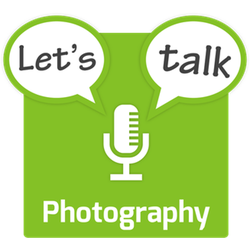Panel
- Bart Busschots (host) – @bbusschots – Flickr
In this solo show Bart opines on two very fundament questions — what is art? and what is Photography? The show was inspired by German artist Boris Eldagsen’s recent rejection of a prise in the Sony World Photography Awards after he entered an images created with the use of generative AI to see what would happen. Eldagsen has also thrown his support behind a new term for these photo-like creations, ‘promptography’.
While this podcast is free for you to enjoy, it’s not free for Bart to create. Please consider supporting the show by becoming a patron on Patreon.
Reminder – you can submit questions for future Q & A shows at http://lets-talk.ie/photoq
Notes
The Trigger — an Intriguing New Story
The seed of inspiration for this show was a news story that a German artist named Boris Eldagsen won a prise in the Creative category of the Sony World Photography Awards with an image titled ‘PSEUDOMNESIA: The Electricia’, and then wrote an open letter rejecting the prize because it was not actually a photograph, but an image he created using generative AI. In their press release announcing the prise Sony described the image as:
[A] haunting black-and-white portrait of two women from different generations, reminiscent of the visual language of 1940s family portraits
The original open letter:
Thank you for selecting my image and making this a historic moment, as it is the first AI generated image to win in a prestigous international PHOTOGRAPHY competition.
How many of you knew or suspected that it was AI generated? Something about this doesn’t feel right, does it?
AI images and photography should not compete with eachother in an award like this. They are different entities. AI is not photography. Therefore I will not accept the award.
I applied as a cheeky monkey, to find out, if the comeptitions are prepared for AI images to enter. They are not.
We, the photo world, need an open discussion. A discussion about what we want to consider photography and what not. Is the umbrella of photography large enough to invite AI images to enter – or would this be a mistake?
With my refusal of the award I hope to speed up this debate.
Having been a photographer for 30 years before I turned to AI, I understand the pros and cons of this debate and will be happy to join the conversation.
If you dont know what to do with the prize, please donate it to the fotofestival in Odesa, Ukraine. I will happily provide you the contacts.
Many thanks Boris
Additional investing quotes from Boris’s responses to the controversy:
I have been photographing since 1989, been a photomedia artist since 2000. After two decades of photography, my artistic focus has shifted to exploring the creative possibilities of AI generators
The work SWPA has chosen is the result of a complex interplay of prompt engineering, inpainting and outpainting that draws on my wealth of photographic knowledge. For me, working with AI image generators is a co-creation, in which I am the director. It is not about pressing a button – and done it is. It is about exploring the complexity of this process, starting with refining text prompts, then developing a complex workflow, and mixing various platforms and techniques. The more you create such a workflow and define parameters, the higher your creative part becomes.
I call my images ‘images’. They are synthetically produced, using ‘the photographic’ as a visual language. They are not ‘photographs’.
Boris has also thrown his weight behind a suggested new term for this kind of generated imagery — Promptography. I really like it!
What is Art? And What is Photography?
These sound like easy questions, but they pretty much never have been! Since the very earliest days of photography, artists have been manipulating images, and people have been kvetching about it!
- Physical manipulation of negatives in the 1800s
- Composite images, from as early as the mid-1800s
- Swedish artist Oscar Gustav Rejlander’s allegory Two Ways of Life from 1857 (metmuseum.org/…)
- The amazing work of Jerry Ulesmann with photographic negatives in recent decades (uelsmann.net/…)
- Stunning work with Photoshop by modern artists like Erik Johansson (erikjo.com/…)
- HDR/Tonemapping etc — one well exposed image from many exposures of the same scene
- Early composite images like ‘The Great Wave’ by Gustave le Gray in 1857 (metmuseum.org/…)
- Eadweard Muybridge’s Sky Shade, an in-camera device for altering the exposure on different parts of the same negative that he patented in 1869 (wikipedia.org/…)
- Modern HDR artists like Trey Ratcliff (treyratcliff.com/…)
- Digital image Filters (remember when they were cool!)
- Modern computational photography image pipelines like we have on our iPhones and high-end Android phones
- Automatic HDR
- Post-exposure re-focus & DOF adjustment
- Auto-composites for groups shots
- AI-powered editing tools
- Auto adjustments
- Content aware fill
- Generative AI
The Easy Question — Is It art?
My hand-waiving definition of artistic imagery is simply:
If the end result is an image that required the creative input of at least one human, it’s art
Sounds simple, but of course it’s not really, the devil is in the detail — what counts as creative input? IMO that’s not a binary question, but it’s a scale, and images are more or less artistic depending on how much of a role the human played.
Taking a very ordinary shot and applying a filter without making adjustments would fall on one end of the spectrum, and work like that of Ratcliff, Ulesmann & Johansson on the other.
But is it Photography?
Here’s my hand-waiving definition of photography:
If the main focus of an image originated from the capture of light on a sensor of some kind, it’s photography
By that simple definition everything our our list is photography, including composite images, HDR, and even photos that make use of generative techniques like content aware fill.
At a stretch, AI-generated images that use a photo as part of the prompt could be argued to be photography too, but the kind of generative AI Eldagsen used is not — he started with a blank canvas, not with captured light, and his first input to get the ball rolling was words, not photons.
I can’t help but fall in love with the term Promptography for this new and emerging art form.
Links
- The news story that caught my attention: https://www.vice.com/en/article/dy3vxy/sony-world-photography-awards-ai-generated
- Sony’s Press Release: https://www.sony-asia.com/pressrelease?prName=open-competition-2023
- Eldagsen’s Open Letter (updated with lots of additional context): https://www.eldagsen.com/sony-world-photography-awards-2023/

